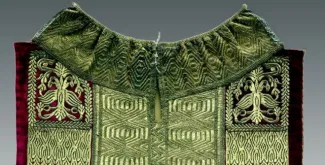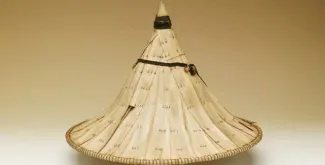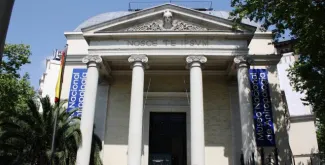Welcome to Madrid
The museum offers comprehensive information on the peoples of the world. It identifies what they have in common and what sets them apart. In brief, a compendium of the world’s cultural diversity.
On 29 April 1875, King Alfonso XII inaugurated the Museum of Anatomy, also known as Museum of Anthropology. It was Segovia-based physician Pedro González Velasco who came up with the idea of having a museum of this kind in Madrid. In fact, he invested all his money in its construction. The architect who designed the building was the Marquis of Cubas. At that time, the collection consisted of items from the three natural kingdoms as set by Linnaeus − mineral, animal, vegetal −, samples of physical anthropology and teratology, antiques and ethnographic objects. The museum was a veritable cabinet of curiosities. Following Dr. González Velasco’s death, the Government purchased the building and the collection. Over the years, numerous objects belonging to the material culture of African, American, Asian, European and Oceanian peoples were added.
In 2004, the National Anthropology Museum initiated the renewal of its permanent exhibition, starting with the Africa Room, followed by the America Room and the Physical Anthropology Room in 2005. The current renewal addresses a new exhibition discourse that is more in line with today’s museological and anthropological scientific criteria, focusing on the theme and grouping the collection into themes like clothing and adornments, music and leisure activities, beliefs, housing and household furnishings, preceded by an introduction and some brief geographical and historical notes. The final phase of the renewal was completed in October 2008, when the new Asia Room (Philippines and Oriental Religions) on the ground floor of the building was opened.
The museum is divided into three floors, on which its five exhibition halls are distributed:
- Origins of the Museum Room: located on the ground floor, it is devoted to the Origins of the Museum. The natural history cabinets until the beginning of the 20th century are recreated in this Room, paying tribute to the Museum’s founder, Dr. Pedro González Velasco. It is going to undergo a thorough museum remodelling.
- Philippines Room: It is located on the ground floor. The ethnic, historic and cultural complexity of this immense archipelago is reflected in the abundant and varied objects belonging to a heterogeneous group of communities which mainly come from the General Expo of the Philippines, held in El Retiro Park in 1887.
- Oriental Religions Room: devoted to the Oriental Religions, it is an overview of the museum’s Asian collections. The lack of space has made it impossible to display all aspects of the diverse and rich cultures of this immense continent, so it is committed to using the three main beliefs: Islam, Buddhism and Hinduism as the guiding thread.
- Africa Room: It is located on the first floor. The diversity of a continent whose cultural wealth is still being discovered will be on display in four themed areas: domestic life, clothing, leisure and religion.
- America Room: located on the 2nd floor, this room is devoted to the cultures of America or Abya Yala, the name given to the continent by the Guna people and which many people prefer to use instead of America, as it is a name of European origin. The collections are displayed in five themed sections: way of life, domestic life, clothing, leisure and religion.
Hidden gems
Dedicated to physical anthropology, Room III recreates natural history cabinets as they actually looked until the early twentieth century. They exhibit specimens of with normal anatomical variants, pathologies, traumas, ethnic differences, etc. You will find a deformed female skull from the Tiwanaku archaeological site in Bolivia, a female skull from Samar Island in the Philippines featuring syphilitic lesions, and a funerary mask with Maori tattoos.




Accessibility
The museum provides a wheelchair service for the whole visit or during the visit if physical difficulties are encountered. Wheelchairs can be requested in Reception.
All of the facilities are accessible.
Entrance to the museum for people with a physical disability or reduced mobility is via Calle Alfonso XII, 68 (side entrance). To use this entrance, just ring the doorbell.
A lift provides access to the different floors inside the museum to eliminate vertical barriers.
The museum also has toilet facilities adapted for people with motor disabilities.
The museum has a magnetic loop, available to people with a hearing impairment and users of hearing aids or hearing implants. Ask for it to be switched on at the museum’s ticket office.
Docking stations:
- Atocha A y B (Paseo de la Infanta Isabel, 3)
- Puerta del Ángel Caído (Avenida de Alfonso XII, 54)
General entry: €3
Free entry: Saturday evenings, Sundays, 18 April, 18 May, 12 October, 6 December
